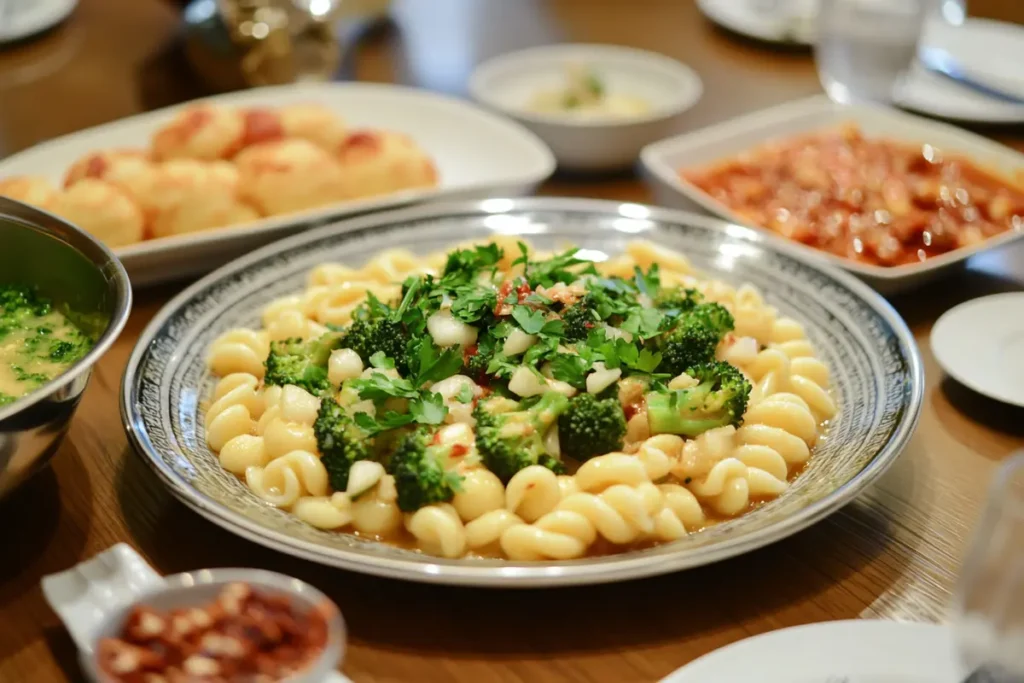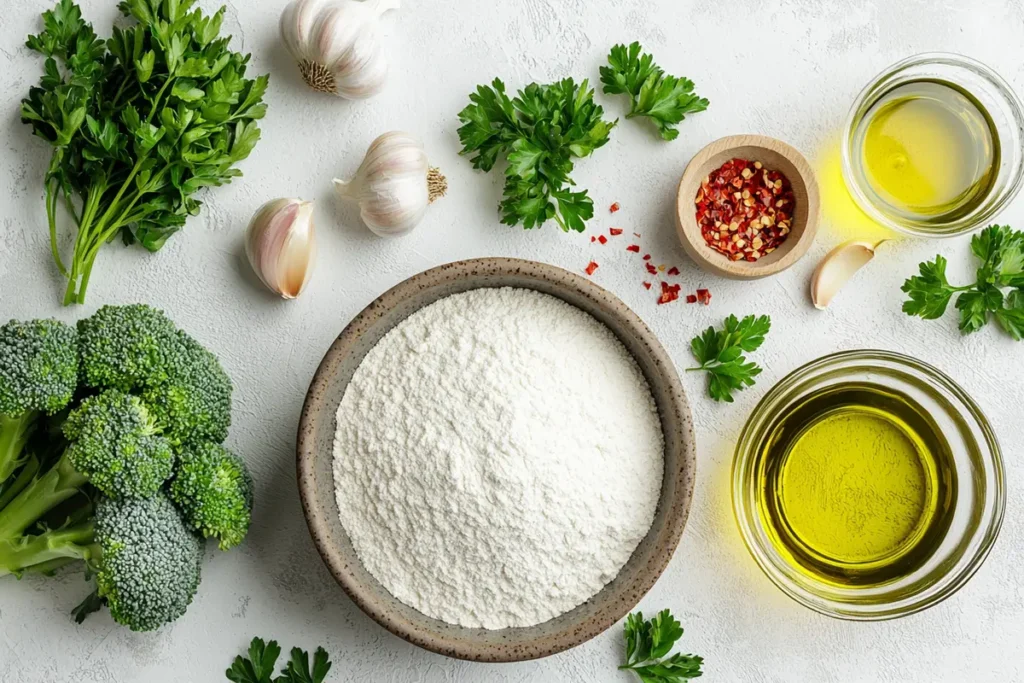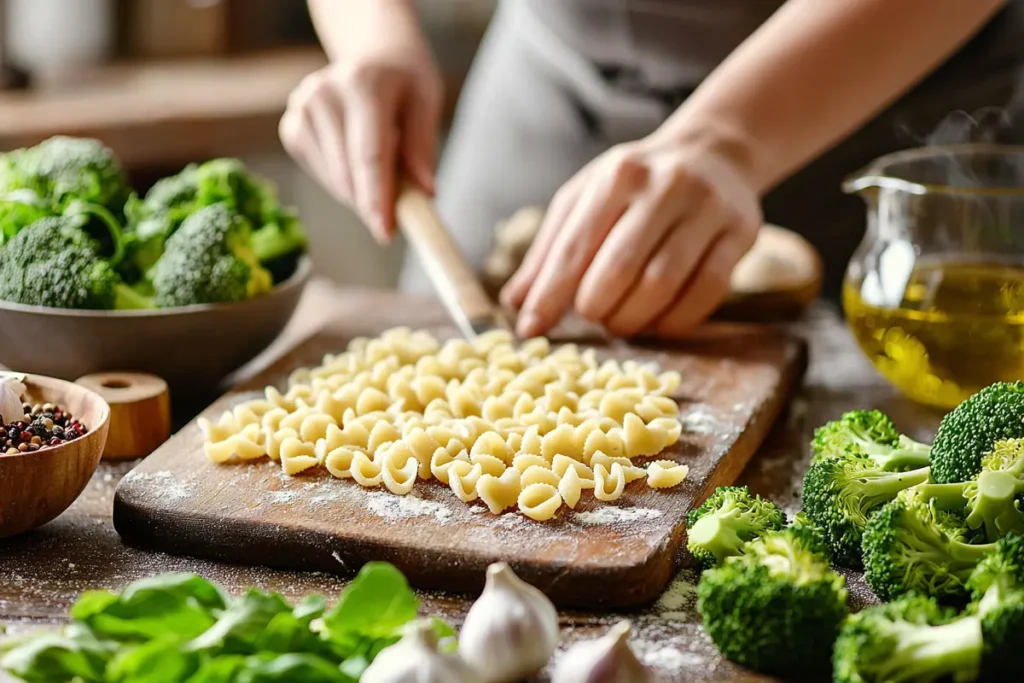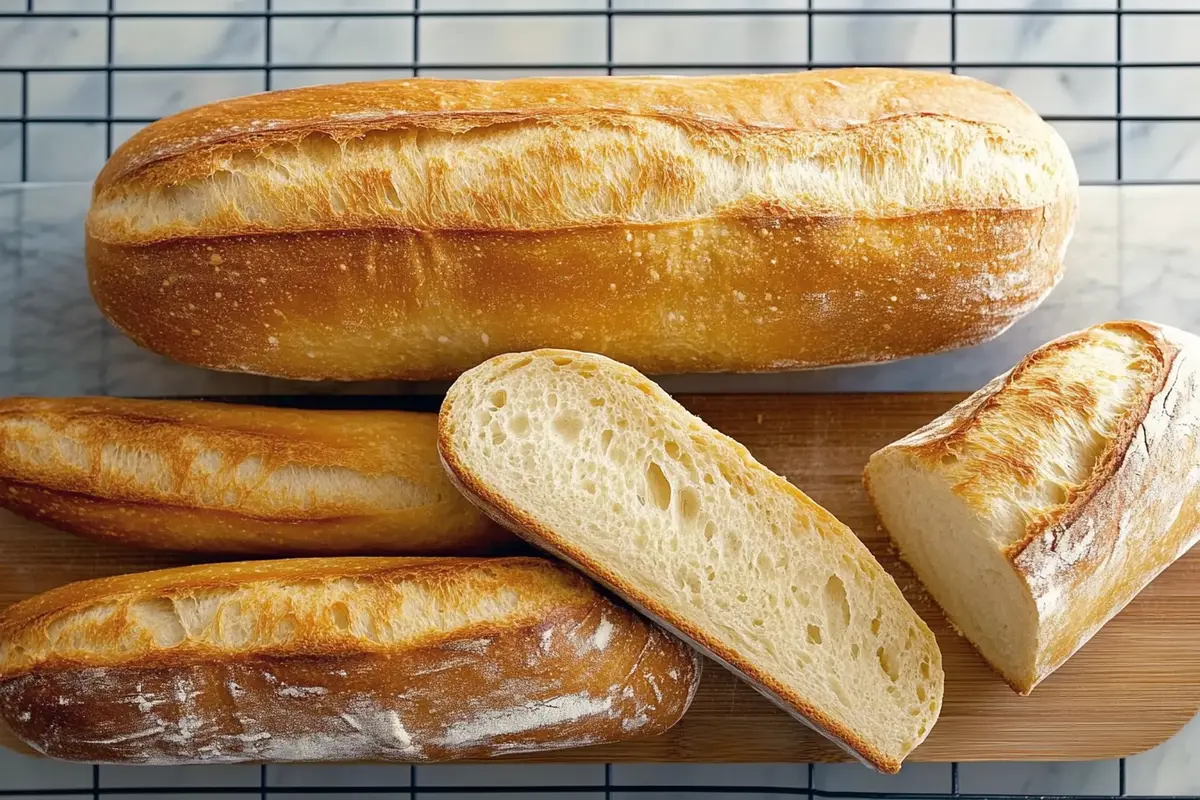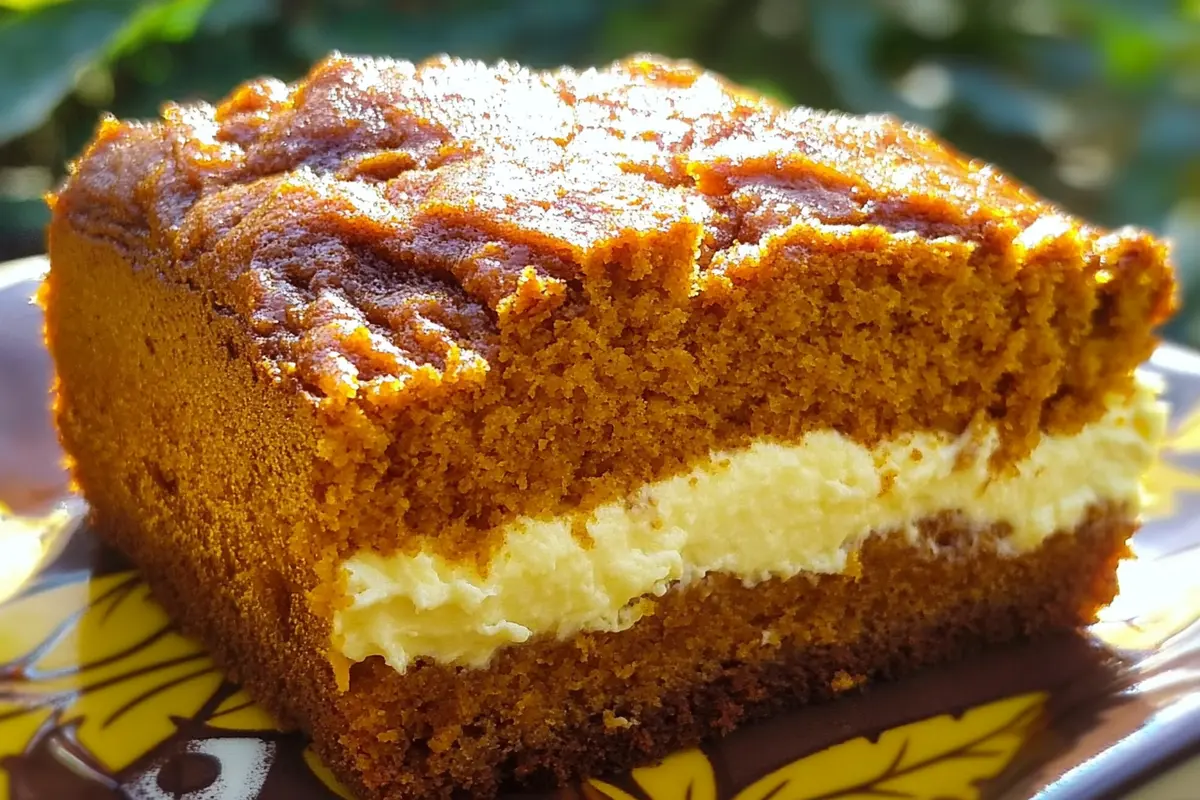Cavatelli is more than just pasta—it’s a testament to the rich traditions and regional diversity of Italian cuisine. Whether handmade or store-bought, this small, shell-like pasta brings an authentic touch to countless dishes. In this article, we’ll explore everything about cavatelli, from its history and preparation to its cultural significance and variations across Italy. So, roll up your sleeves, and let’s dive into the world of this delightful pasta.
Traditional Preparation Methods
Ingredients for Authentic Cavatelli
Making this authentic Italian pasta starts with the simplest ingredients, yet the results are extraordinary. The traditional recipe calls for:
- Semolina flour: Known for its coarse texture and golden hue, semolina provides the pasta’s distinct chewiness and nutty flavor.
- Water: Preferably lukewarm, to create a pliable dough.
- Salt: A pinch of salt enhances the flavor of the pasta, even before it meets a sauce.
Role of Semolina Flour in Cavatelli
Semolina flour plays a critical role in shaping the structure and flavor of this pasta. Its high gluten content gives the dough elasticity, allowing it to be shaped without tearing. Moreover, the coarse granules create a slightly rough surface on the pasta, which is perfect for holding onto sauces like marinara or pesto.
Unlike all-purpose flour, semolina offers a richer flavor and a firmer bite, giving cavatelli its signature texture. If semolina isn’t available, some cooks use a mix of semolina and all-purpose flour, but the authenticity lies in sticking to tradition.
Step-by-Step Guide to Making Cavatelli at Home
Making cavatelli at home is a rewarding process, filled with hands-on fun and a dash of artistry. Here’s how you can craft your own batch of authentic cavatelli:
- Mixing the Dough:
- Combine 2 cups of semolina flour with a pinch of salt in a large bowl.
- Slowly add ¾ cup of lukewarm water, mixing with a fork or your hands until the dough comes together.
- Kneading:
- Transfer the dough to a floured surface. Knead for 8–10 minutes until it becomes smooth and elastic.
- Wrap the dough in plastic wrap and let it rest for at least 30 minutes. This step allows the gluten to relax, making the dough easier to shape.
- Shaping the Cavatelli:
- Divide the dough into smaller portions and roll each into long ropes about ½ inch thick.
- Cut the ropes into 1-inch pieces.
- Using your thumb, press into the center of each piece and gently roll it to form the characteristic hollow shape. For added texture, you can use a gnocchi board or fork to create ridges.
- Drying or Cooking:
- Place the shaped pasta shells on a floured tray, making sure they don’t stick together.
- Cook immediately in boiling salted water or let them dry for later use.
Common Mistakes to Avoid
- Too much water in the dough: This makes it sticky and hard to shape. Always add water gradually.
- Over-kneading the dough: While kneading is essential, overdoing it can make the dough too stiff. Aim for a smooth but pliable texture.
- Skipping the resting step: Resting the dough allows gluten to relax, making shaping easier. Skipping this step can result in a frustratingly elastic dough.
- Crowding the cooking pot: When boiling cavatelli, too many pieces in the pot can stick together. Cook in batches if necessary.
Regional Variations and Serving Suggestions
Exploring Regional Italian Pasta Styles
Cavatelli is beloved across Italy, but its preparation and serving styles vary by region, reflecting the diverse culinary traditions of the country. Each area adds its unique twist, influenced by local ingredients and cultural preferences.
In southern Italy, cavatelli is often paired with hearty greens or legumes, such as broccoli rabe or chickpeas. In northern regions, richer sauces like mushroom cream or ragù dominate. Some areas even infuse the dough with unique ingredients, such as squid ink or spinach, to give the pasta a distinct color and flavor.
Regional variations also extend to the pasta’s shape. While most cavatelli are small and shell-like, some regions, like Campania, make slightly larger versions, called cavatelloni. These larger pieces are ideal for stuffing or pairing with robust sauces.
Regional Pasta Traditions: Molise and Puglia
In Puglia, cavatelli con cime di rapa is a staple dish. This combination of pasta with bitter greens, garlic, and chili flakes perfectly balances the pasta’s mild flavor with the greens’ bold, slightly spicy profile. Puglia’s proximity to the coast also inspires seafood-based variations, where cavatelli is paired with clams or shrimp in a light tomato sauce.
Popular Cavatelli Recipes
From simple weeknight meals to special occasion dishes, cavatelli can shine in a variety of recipes. Its ability to pair well with vegetables, meats, and sauces makes it a go-to pasta for both novice and experienced cooks.
Cavatelli with Broccoli and Garlic
One of the most iconic ways to enjoy cavatelli is with broccoli and garlic. This dish combines the pasta with sautéed broccoli florets, plenty of garlic, and a drizzle of olive oil for a simple yet flavorful meal.
To prepare:
- Cook cavatelli until al dente. Reserve some pasta water.
- In a pan, sauté minced garlic in olive oil until fragrant. Add cooked broccoli and a splash of the reserved pasta water.
- Toss the cooked cavatelli in the pan, coating the pasta in the sauce. Season with salt, pepper, and a pinch of chili flakes.
Matching Pasta to Sauces for Maximum Flavor
To prepare:
- Brown crumbled Italian sausage in a large skillet. Remove and set aside.
- In the same skillet, sauté garlic and onion until soft. Add your greens—spinach, kale, or Swiss chard—and cook until wilted.
- Toss the cooked cavatelli into the skillet with the sausage and greens. Add a splash of broth or pasta water for a light sauce.
Nutritional Information and Cultural Significance
Nutritional Profile of Cavatelli
This semolina-based pasta is straightforward yet wholesome that packs a nutritional punch. Semolina flour, the key ingredient, is rich in protein, fiber, and essential nutrients like iron and B vitamins.
A standard serving of cavatelli (about 100 grams) provides:
- Calories: ~200
- Protein: ~7 grams
- Carbohydrates: ~40 grams
- Fat: ~1 gram
Since it’s naturally low in fat and contains no added sugars, cavatelli is a versatile addition to a balanced diet. Pairing it with fresh vegetables, lean proteins, or nutrient-rich sauces can enhance its health benefits.
Exploring Healthy Substitutes for Classic Recipes
The high protein content in semolina flour supports muscle repair and growth, while its fiber aids digestion and promotes satiety. For those seeking energy-boosting meals, cavatelli is an excellent choice due to its complex carbohydrates, which provide a slow and steady release of energy.
However, those with gluten sensitivities or celiac disease should avoid traditional cavatelli, as semolina is derived from wheat. Gluten-free versions made with alternative flours, like rice or chickpea flour, are widely available, ensuring everyone can enjoy this beloved pasta.
Cultural Significance of Cavatelli in Italian Cuisine
Beyond the kitchen, cavatelli holds a special place on Italian dinner tables. Its versatility allows it to be featured in everyday meals and festive occasions alike. Whether served with simple olive oil or elaborate ragù, cavatelli embodies the essence of Italian hospitality and creativity.
Festivals and Feasts: Celebrating Italian Cuisine
Throughout Italy, cavatelli is celebrated in festivals that honor regional cuisine and bring communities together. For example, in Molise, the Sagra del Cavatello is an annual festival where locals showcase traditional recipes, enjoy live music, and share their passion for this iconic pasta.
In some regions, cavatelli is considered a dish of good luck and abundance, often served during weddings, religious feasts, or New Year’s celebrations. Its simple preparation allows home cooks to adapt it to seasonal ingredients, ensuring it remains a staple in Italian kitchens year-round.
Frequently Asked Questions
What is the difference between cavatelli and gnocchi?
While cavatelli and gnocchi may look similar at first glance, they are distinct in texture, ingredients, and preparation.
Cavatelli is a flour-based pasta, traditionally made with semolina and water, giving it a firm yet chewy texture. It has a hollow or ridged shape that makes it ideal for trapping sauces.
On the other hand, gnocchi is typically made from potatoes, sometimes combined with flour or ricotta. Its texture is softer and more pillowy, making it perfect for creamy or buttery sauces. While both are shaped by hand, gnocchi is often pressed with a fork, whereas cavatelli is rolled and shaped using fingers or a ridged board.
What kind of food are cavatelli?
This type of pasta is defined by its small, shell-like shape. It is handmade and celebrated for its ability to pair well with various sauces and toppings.
This pasta is versatile, featuring in dishes ranging from simple olive oil and garlic preparations to hearty recipes with sausage and greens. It’s also an essential part of Italian culinary tradition, often made fresh in family kitchens or showcased at regional festivals.
Where does cavatelli come from?
Cavatelli originates from southern Italy, particularly the regions of Molise and Puglia. These areas are known for their rustic and resourceful cooking styles, using locally available ingredients to create wholesome and satisfying meals.
Today, cavatelli remains a cherished part of Italy’s culinary heritage, celebrated both locally and internationally.
Why is it called 8 finger cavatelli?
The term “8 finger cavatelli” refers to a playful method of making cavatelli in larger quantities. Typically, two people work together, using the pads of all eight fingers (four per person) to press and shape the pasta simultaneously.
This method speeds up the process of making cavatelli, especially during family gatherings or festivals when large batches are needed. The phrase also reflects the communal and interactive nature of making handmade pasta, where teamwork and tradition go hand in hand.
Print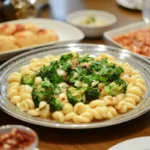
Cavatelli: The Ultimate Guide to Italy’s Iconic Pasta Shape
- Total Time: 25 minutes
- Yield: 4 servings 1x
- Diet: Vegetarian
Ingredients
-
For the Cavatelli Pasta:
- 1 pound of fresh or dried cavatelli pasta (store-bought or homemade)
- Salt (for the pasta water)
-
For the Sauce:
- 3 cups broccoli florets (chopped into bite-sized pieces)
- 4–6 cloves of garlic (thinly sliced)
- 4 tablespoons extra virgin olive oil
- ½ teaspoon red chili flakes (optional, for heat)
- ½ cup reserved pasta water
- Salt and freshly ground black pepper (to taste)
-
For Garnish:
- Fresh parsley (chopped, for garnish)
- Grated Parmesan cheese (optional)
Instructions
1. Prepare the Broccoli:
- Begin by washing the broccoli thoroughly and cutting it into small, bite-sized florets. If desired, you can also use the stems; just peel the tough outer layer and chop them into thin pieces.
2. Boil the Pasta:
3. Cook the Broccoli:
4. Sauté the Garlic and Chili Flakes:
- In a large skillet or pan, heat the olive oil over medium heat.
- Add the sliced garlic and sauté for 1–2 minutes until fragrant and golden (be careful not to burn it).
- If you like a bit of spice, add the red chili flakes at this stage and stir for 30 seconds.
5. Combine Broccoli and Pasta Water:
- Toss the blanched broccoli into the skillet with the garlic and chili flakes.
- Add a splash of the reserved pasta water to create a light sauce. Stir well to combine.
6. Add the Cooked Cavatelli:
- Transfer the cooked cavatelli to the skillet with the broccoli and garlic mixture.
- Toss everything together gently, ensuring the pasta is well coated in the sauce.
- Season with salt and freshly ground black pepper to taste.
7. Garnish and Serve:
- Remove the skillet from heat and sprinkle chopped parsley over the dish.
- Serve hot, with grated Parmesan cheese on the side for those who want an extra layer of flavor.
Notes
- Timing is key: Start cooking the sauce while the pasta boils to save time and ensure everything comes together fresh and hot.
- Make it gluten-free: Use gluten-free pasta to adapt this dish for dietary needs.
- Add protein: For a heartier meal, you can toss in cooked chicken, shrimp, or white beans.
- Prep Time: 10 minutes
- Cook Time: 15 minutes
- Category: Main Course
- Method: Boiling, Sautéing
- Cuisine: Italian
Nutrition
- Serving Size: 1 plate (approximately 1/4 of the recipe)
- Calories: 360 kcal
- Sugar: 3 g
- Sodium: 310 mg
- Fat: 14 g
- Saturated Fat: 2 g
- Unsaturated Fat: 11 g
- Trans Fat: 0 g
- Carbohydrates: 48 g
- Fiber: 5 g
- Protein: 10 g
- Cholesterol: 0 mg

